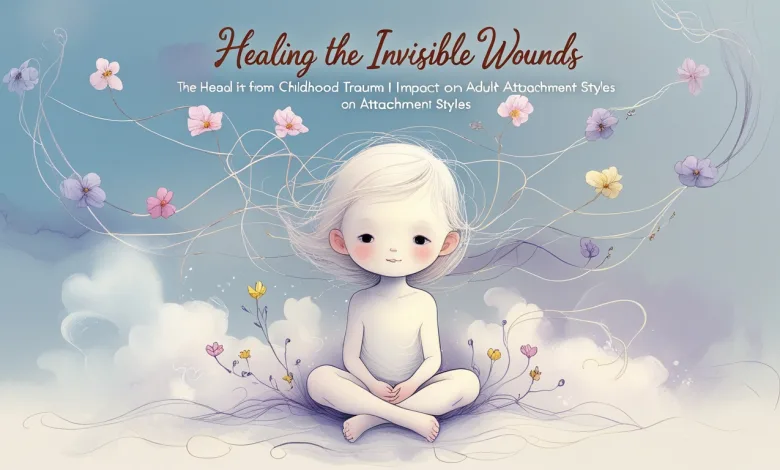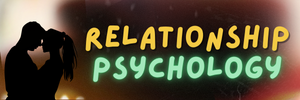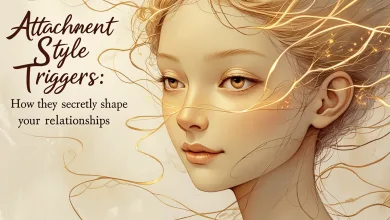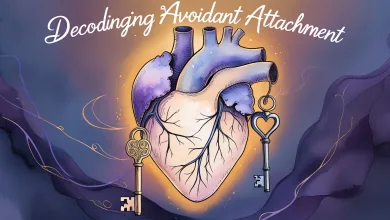Unraveling Childhood Trauma and Attachment Styles: A Comprehensive Guide to Healing

Introduction: The Ripple Effect of Early Experiences
Hey there, let’s talk about something that’s been lurking in the shadows of many people’s lives – childhood trauma and its sneaky sidekick, attachment styles. You might be wondering, “What’s the big deal?” Well, buckle up, because we’re about to dive deep into a journey that could change everything you thought you knew about relationships.
Childhood trauma isn’t just a buzzword – it’s a real, heart-wrenching experience that can shape our entire emotional landscape. Imagine your early years as the foundation of a house. When that foundation is cracked or unstable, everything built on top becomes wobbly. That’s exactly how childhood trauma works in our emotional world.
Understanding Childhood Trauma: More Than Just Memories
What Exactly is Childhood Trauma?
Childhood trauma isn’t just about dramatic, headline-grabbing events. It’s the death by a thousand cuts – those seemingly small moments that pile up and leave lasting marks. We’re talking about:
- Emotional neglect
- Persistent criticism
- Unpredictable family environments
- Chronic stress
- Abuse (emotional, physical, or sexual)
- Significant loss or separation

The Neurobiological Impact: It’s Not Just in Your Head
Here’s where it gets scientific (but don’t worry, I’ll keep it interesting). Childhood trauma doesn’t just mess with your emotions – it literally rewires your brain. The stress response system goes into overdrive, creating a perpetual state of fight-or-flight that can stick around long after the original threat is gone.
Attachment Styles: The Relationship Blueprint
Breaking Down Attachment Styles
Think of attachment styles like relationship personality types. They’re essentially the emotional strategies we develop to protect ourselves based on our early experiences:
- Secure Attachment: The Golden Standard
- Feels safe in relationships
- Can give and receive love easily
- Communicates openly and effectively
- Anxious Attachment: The Emotional Rollercoaster
- Constant fear of abandonment
- Seeks excessive reassurance
- Struggles with self-worth
- Avoidant Attachment: The Emotional Fort Knox
- Keeps people at arm’s length
- Struggles with emotional intimacy
- Values independence above connection
- Disorganized Attachment: The Emotional Tornado
- Most complex and challenging style
- Simultaneous fear and desire for closeness
- Unpredictable relationship patterns
The Healing Journey: Breaking the Cycle
Recognizing Your Attachment Pattern
Heads up – awareness is the first step to healing! Ask yourself:
- Do your relationships follow a similar painful pattern?
- Do you find yourself attracting similar types of partners?
- Do you struggle with vulnerability?
Therapeutic Approaches to Healing
Good news – childhood trauma doesn’t have to be a life sentence. Several approaches can help:
- Trauma-Focused Cognitive Behavioral Therapy (TF-CBT)
- Eye Movement Desensitization and Reprocessing (EMDR)
- Attachment-Based Therapy
- Somatic Experiencing
- Inner Child Work
The Hope Factor: Rewiring is Possible
Listen up – your past doesn’t define your future. Neuroplasticity is a beautiful thing, meaning our brains can literally rewire themselves. With the right support, tools, and commitment, healing isn’t just possible – it’s probable.
FAQs About Childhood Trauma and Attachment
Q: Can you change your attachment style? Absolutely! It takes work, but therapeutic intervention and self-awareness can significantly shift attachment patterns.
Q: How long does healing from childhood trauma take? There’s no universal timeline. Healing is a personal journey that varies for everyone.
Q: Can childhood trauma affect physical health? You bet. Chronic stress from childhood trauma can lead to various health issues, including autoimmune disorders and heart problems.
Wrapping It Up: Your Path Forward
The road to healing might seem long, but remember – every step counts. Your childhood experiences don’t have to be your life’s definition. They can be the catalyst for profound personal growth and transformation.






